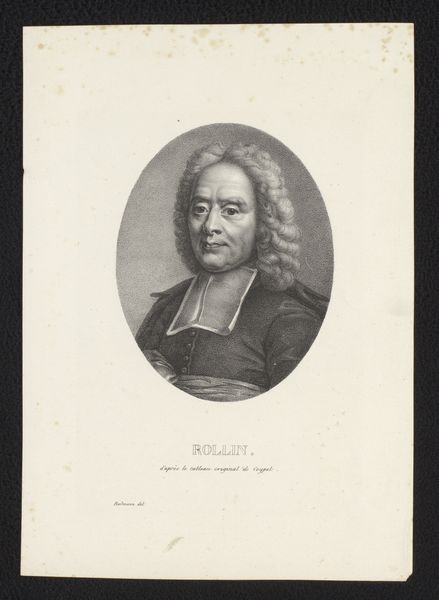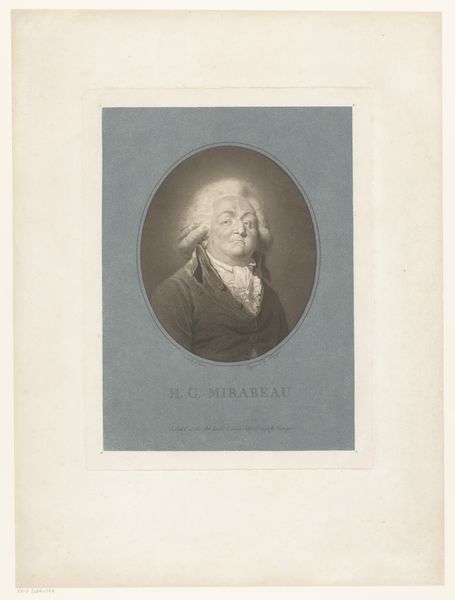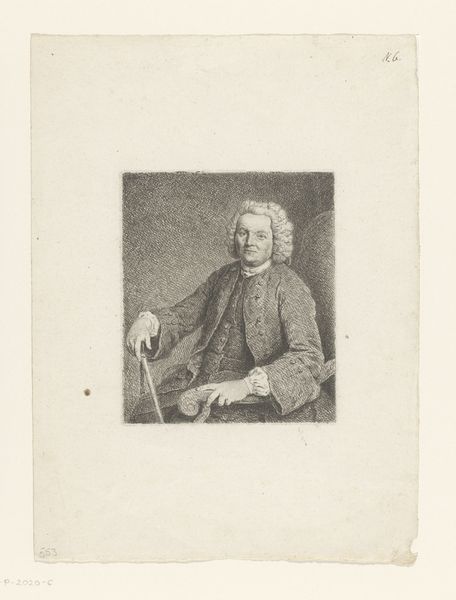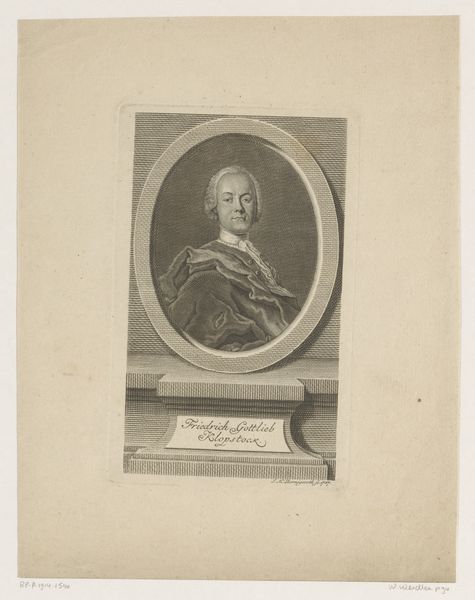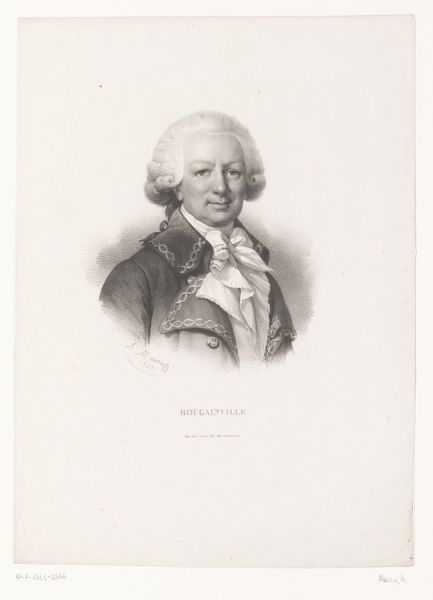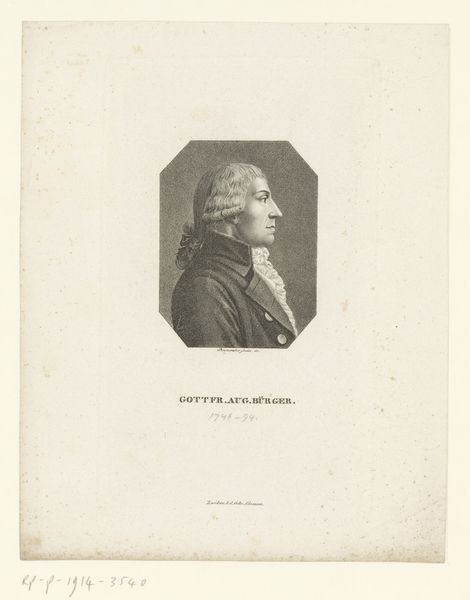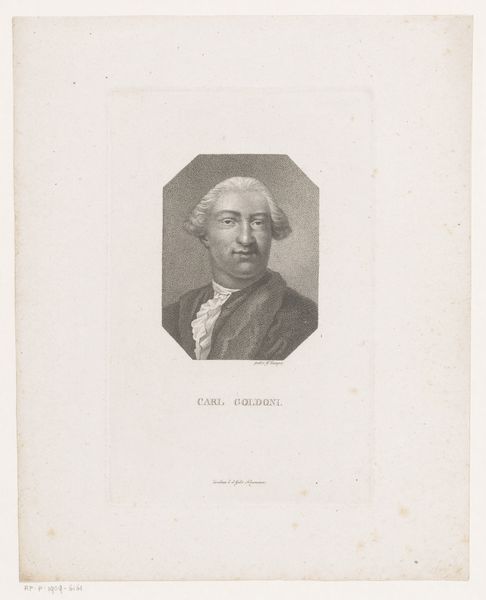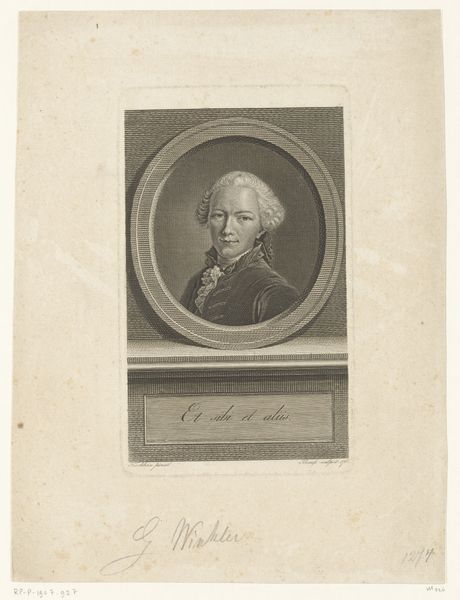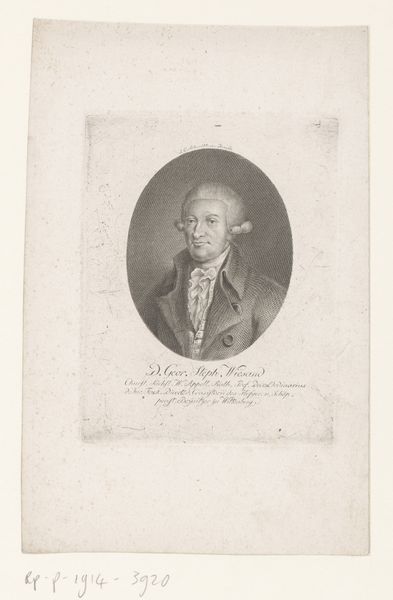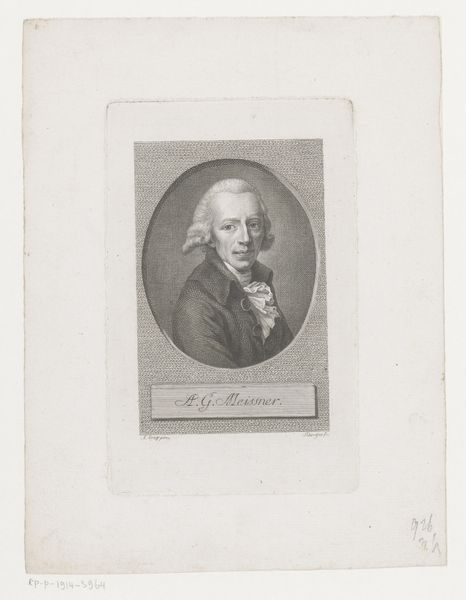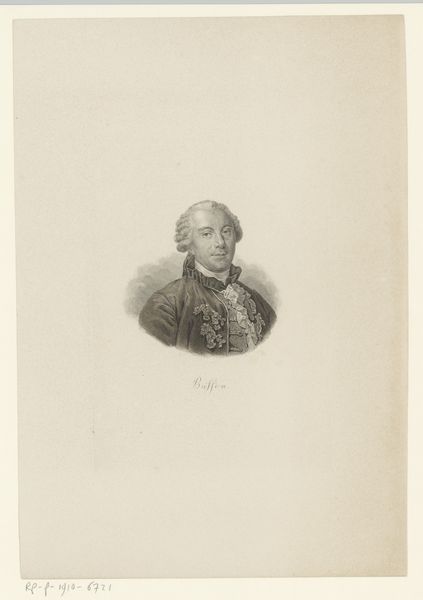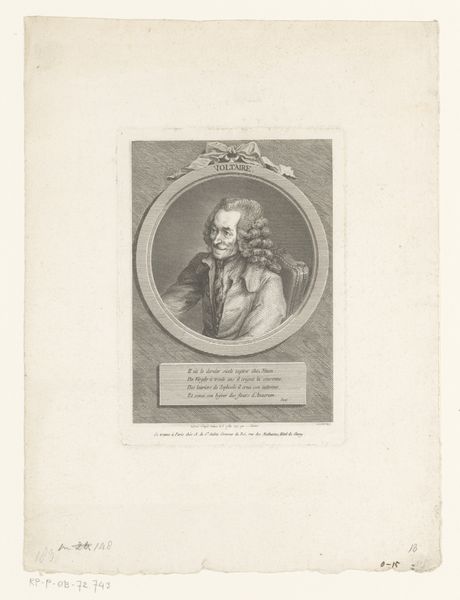
print, engraving
#
portrait
#
neoclacissism
# print
#
old engraving style
#
history-painting
#
engraving
Dimensions: height 130 mm, width 99 mm
Copyright: Rijks Museum: Open Domain
Editor: Here we have Albert Schule's "Portret van Friedrich Gottlieb Klopstock" from 1819, a print made through engraving. I find the subject's gaze quite compelling; it's directed slightly off-center, lending an air of intellectual depth. What stylistic elements strike you most in this piece? Curator: The meticulous linework is undeniably the defining characteristic. Note the gradations in tone achieved solely through variations in the density and direction of the engraved lines. How do you see that affecting the representation of the subject matter? Editor: Well, the precision gives it a sense of formality, perhaps fitting for a portrait of a prominent figure. It also emphasizes the textures of his clothing and hair. Curator: Precisely. The artist deploys line to model form, rendering volume and light with remarkable efficiency. The controlled hatching lends a sense of idealized representation. Editor: So, is it less about capturing a realistic likeness and more about presenting a cultivated image? Curator: Consider the Neoclassical movement's broader aims. There's a deliberate embrace of order, clarity, and ideal forms, directly reflecting the intellectual values of the time. This engraving method—almost mathematically precise—certainly reinforces those values. Editor: It’s interesting how the medium itself can so strongly convey a particular ideological perspective. I hadn't thought about it like that before. Curator: Observing the nuances of the material is central to art's semiotic language. Editor: I will make a point of looking closely at line work more often now! Thank you!
Comments
No comments
Be the first to comment and join the conversation on the ultimate creative platform.
